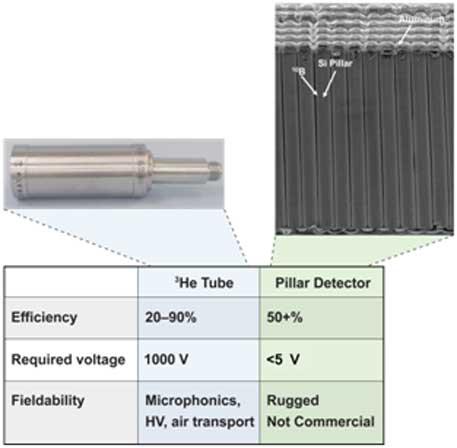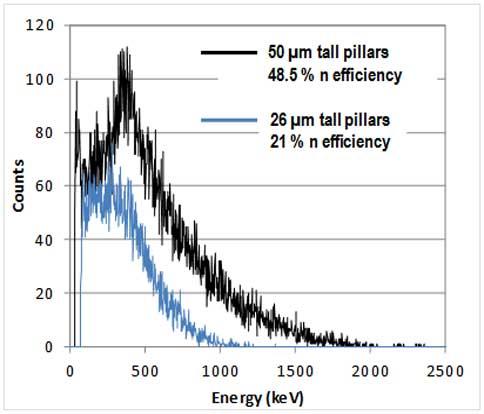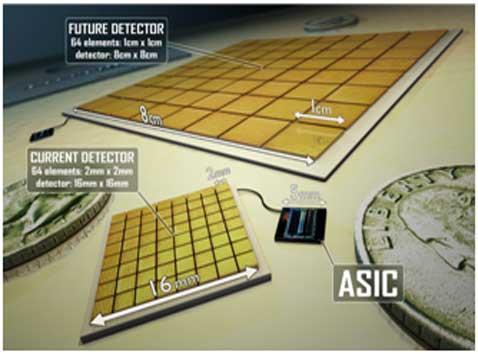Present technology for thermal neutron detection suffers from fieldability issues such as high voltage, sensitivity to vibration and large size for handheld applications. More recently the need is compounded by a shortage of 3He which is the primary constituent of commercially available system. LLNL's neutron Pillar Detector technology is directed to such a need and is particular well suited for small form factor 3He tube replacements (hand portable) and/or applications requiring a modular format.
LLNL's neutron "Pillar Detector" fabrication technology uses semiconductor-based micro-structured elements as an electrical signal generation medium for the detection of neutrons. These materials in the form of semiconductor "pillars" embedded in matrix of high cross-section neutron converter materials (such as Boron) that emit charged particles upon interaction with neutrons. These charged particles in turn generate electron-hole pairs and thus detectable electrical current in the semiconductor micro-structured elements.
- The main advantage of the Pillar Detector design emerges from the greatly enhanced fieldability of this all-solid-state device over the 3He gas detectors currently in wide spread use.
- We are able to eliminate the need for high voltage and pressure and to reduce the sensitivity to vibrations.
- The power requirements are greatly diminished.
Potential applications for the pillar detector include:
- Military, civil, or medical applications in the field or laboratory environment
- Radiation detection for counter terrorism and contamination control
- Luggage or cargo container inspection in airports and ports
- Radiation detection for particles accelerators and cyclotrons
- Analyzing samples in the laboratory environment
Under contract with DHS DNDO we have demonstrated detectors with 50 micron tall pillar elements with thermal neutron detection efficiency up to 48.5 %. The detector operates at 0V and has neutron to gamma discrimination > 105. Instrumented systems of single and multichannel have been completed.
Multiple patent applications have been filed for the fabrication technology embodied in this invention. Most of the fabrication steps have been well developed for the 50 micron tall pillar arrays and the overall integrated device is currently being pursued. We have interest in increasing array size by integrated multiple detector elements with a 64 (or larger) ASIC read out.
U.S. Patent 8,314,400.
U.S. Patent 8,558,188.
U.S. Patent 8,829,460.
U.S. Patent Application 2013/0187056
U.S. Patent Application 2013/0334541





